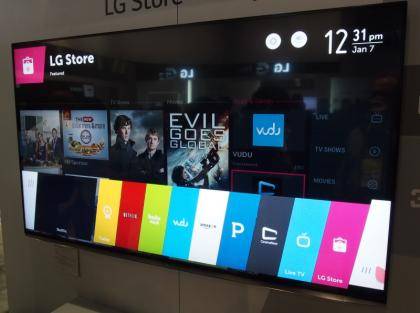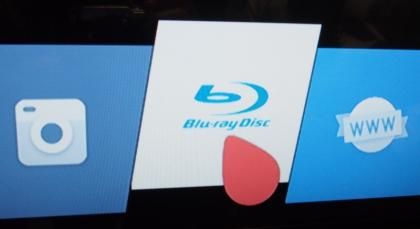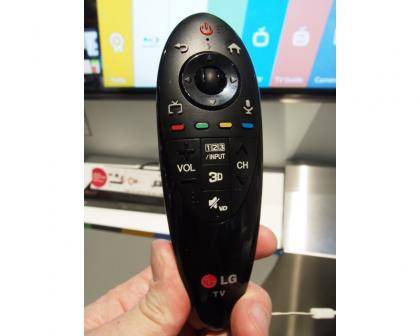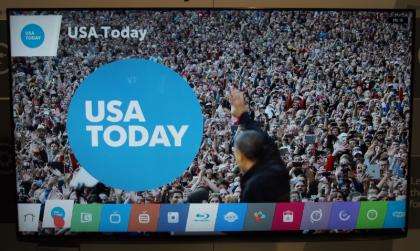LG has officially revealed its new WebOS smart TV platform, just in time to arrive in its 2014 TV line-up. The streamlined interface has been designed to be responsive and easy to use, without distracting you from the currently playing channel. We got our hands on it, no the show floor at CES 2014 today.
LG acquired WebOS from HP in March last year, but until now has been keeping development under wraps. There's almost nothing left of the original UI - the new interface is colourful, with apps and services represented by slices at the bottom of the screen. There's no distinction between channels, services or inputs - everything appears in the same bar.

This means that when you plug in your Blu-ray player Web OS will ask you what kind of device it is and pop an appropriate logo on the menu bar. This means you don’t ever have to think about which arbitrary HDMI input your player is plugged into, you just select the Blu-ray icon. You can also attach favourite TV channels here and online services, such as Netflix, accessed via their apps.

The menu bar only takes up the bottom of the screen, so you can always largely see what’s playing on your TV while you navigate it. LG talked about a past-present-future design, the past is represented by recently used apps or content which sit to the left-hand of the menu bar (up to 10 of these), the present is the live TV or app currently playing full screen, and the future is menu bar itself, which you can use to go onto other things.
In use it all works very well. We like to be able to see what’s going on while we browse for something else, and being able to practically instantaneously return to previous choices is brilliant. The styling is great too, with a simplistic, colourful look that should appeal to all. It’s very simple, which was LG’s stated aim, with none of the layers of fancy features we see added to Samsung’s TVs year-on-year. At first we thought that there must be more to it, but LG has simply created something rather neat and functional here.
A LITTLE BIT OF MAGIC
As with previous LG TVs, new WebOS-equipped sets will come with a Magic Remote that lets you move an onscreen cursor by waving your hand, just like the Nintendo Wii and Wii U . We'll withhold judgement until we've tried WebOS ourselves, but we prefer physical buttons for navigating TV interfaces rather than hovering our arms in mid-air to select an icon or open a menu.

Because WebOS is based on HTML rather than proprietary code, it should be easier for developers to code for. It has certainly helped companies like Netflix, which has just pledged to support webOS with its forthcoming 4K streaming service . It’s open source too, so developers don’t have to jump through hoops to get there services onto LG’s TVs.

The question will be how quickly developers can provide us with UK-centric content to fill our menu bars with
WebOS won't be coming to every LG TV in 2014 - the company says over half of its new models will have the new platform, while others will retain the old format.
IMPRESSIVE CURVES
To coincide with the announcement, LG also revealed its 105in curved OLED Ultra HD TV officially for the first time. Having already been announced ahead of CES it came as no surprise, but the 21:9 aspect ratio and massive dimensions are undeniably impressive. Although no official pricing or availability was mentioned during the press conference, we've heard whispers of an eye-watering $70,000 - if it actually goes on sale at all.
